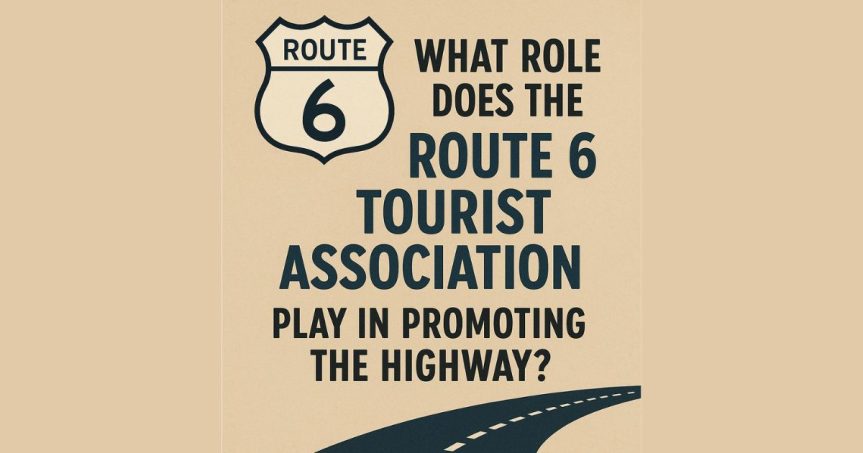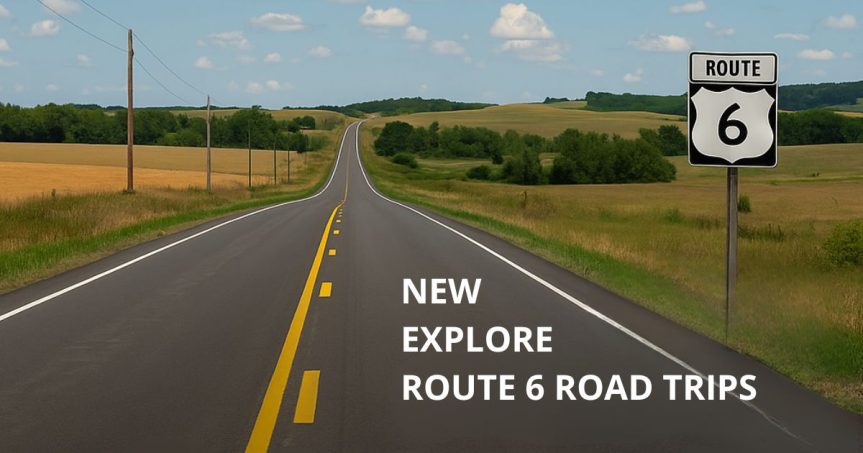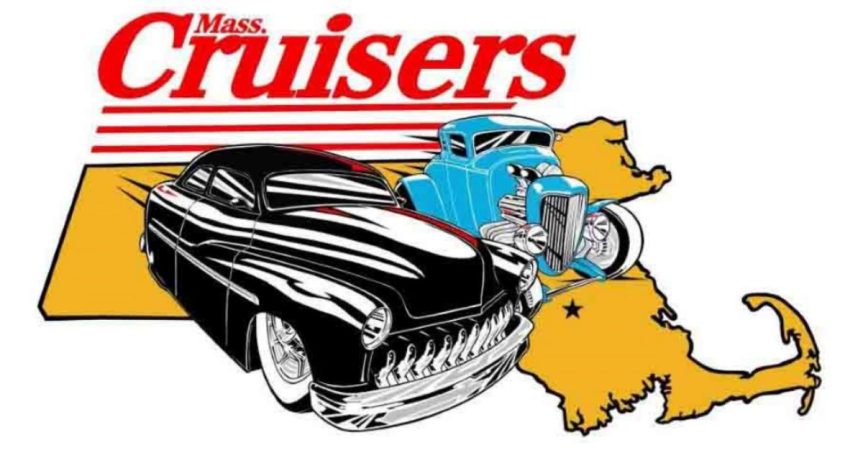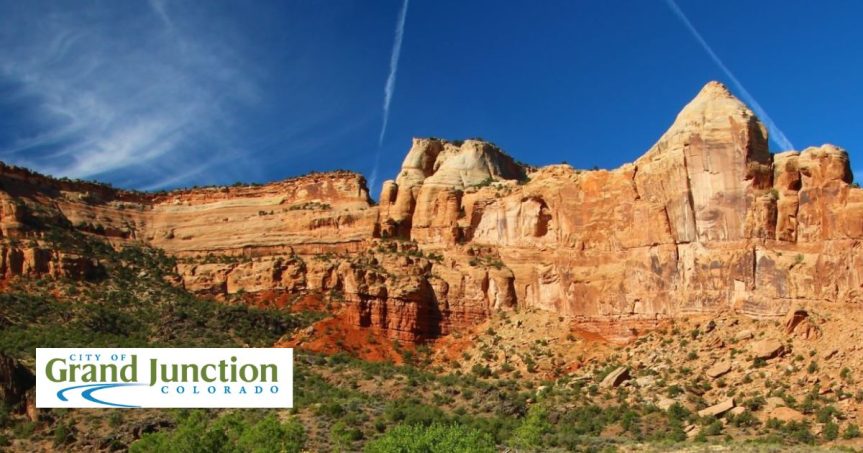U.S. Route 6 – famously known as the Grand Army of the Republic Highway – stretches from Provincetown, Massachusetts to Long Beach, California, once earning it the title of “the Longest Highway” in America. The nonprofit U.S. Route 6 Tourist Association has worked tirelessly to preserve, promote, and celebrate this storied route and to boost the communities along its 3,652-mile path. Below is a structured report on how the Association contributes through marketing, events and partnerships, and historic preservation initiatives.
1. Marketing and Promotional Strategies
The U.S. Route 6 Tourist Association employs multi-faceted marketing strategies to promote tourism along Route 6 and brand it as a destination in itself:
- Comprehensive Online Presence: The Association maintains a rich “US Route 6 Information Center” website with travel resources for all 14 states along the route. This site features interactive state-by-state tour guides, maps, and a directory of attractions and supporting businesses, making trip planning easy for travelers. A regularly updated “Route 6 Tour Happenings” blog showcases travel itineraries, local spotlights, and news updates (for example, recent posts have highlighted must-see stops in states like Nevada and Iowa, and even weekly event updates) to keep content fresh and engaging for road trippers.
- Digital and Social Media Outreach: The Association has an active presence on social platforms (e.g. Facebook and X/Twitter) to engage the community. They share historic facts, traveler photos, and event announcements using hashtags like #Route6 and #GrandArmyHighway, cultivating a fan base of history buffs and road-trip enthusiasts. This online engagement helps brand Route 6 as “The Roadway to Adventure,” a slogan the Association often uses in its materials.
- Print Media and Publications: To reach broader audiences, the Association produces or endorses traditional media. It began a quarterly newsletter and aspires to launch a bi-monthly magazine titled “U.S. Route 6 – Roadway to Adventure” to tell stories from along the highway. The Association also collaborated with travel writer Malerie Yolen-Cohen to publish a dedicated guidebook, “Stay on Route 6,” chronicling a six-week journey on Historic Route 6. This guidebook (prominently featured on the Association’s site) serves as both a travel companion and a promotional tool, inspiring readers to follow the author’s road trip across all 3,600+ miles.
- Branding Campaigns: The Association actively brands Route 6’s unique heritage. In the early 2000s they kicked off a “The Longest Highway” campaign to draw new travelers, emphasizing that Route 6 spans diverse landscapes from coast to coast. By marketing Route 6 as “not just a road, but a journey through American history,” the Association taps into heritage tourism interest. They frequently highlight Route 6’s official name – Grand Army of the Republic Highway – to stress its historic significance (honoring Civil War veterans) and use imagery of the classic US 6 shield in promotions.
- Sponsorships and Collateral: As a 501(c)(3) nonprofit, the Association builds support through sponsorship programs and branded merchandise. They produce Route 6 travel decals, offer supporters official “Historic U.S. 6” highway signs, and run a “Stay on Route 6” sponsorship blog. For example, the Massachusetts chapter raised funds by offering authentic Massachusetts Historic Route 6 signs (2 ft x 3 ft replicas with reflective surface) to donors – effectively spreading Route 6 signage while funding their student internship program. Such branded memorabilia turn donors into ambassadors who literally “post” Route 6 on the landscape. The Association also recognizes founding sponsors and local businesses on its site, creating goodwill and a shared identity around the highway.
In summary, the Route 6 Tourist Association’s marketing combines online content, print guides, branding campaigns, and community engagement to promote Route 6. By positioning the highway as a “roadway to adventure” rich in Americana, the Association attracts travelers to explore off the interstates and discover the small-town gems along Historic 6.
2. Events and Partnerships
Events and strategic partnerships are central to the Association’s role in fostering Route 6 tourism. The national office and its state divisions coordinate various activities that bring history to life and drive visitors into local communities:
- Heritage Road Trips & Car Cruises: The Association organizes and sponsors nostalgic road-trip events that celebrate the highway’s golden age. For instance, the Iowa division holds an annual “River to River Retro Road Trip” – a classic car cruise traversing Iowa on old Route 6. Dozens of vintage car owners join a convoy from the Mississippi River to the Missouri River, stopping in small towns along the way. In one such cruise, participants drove from Davenport to Council Bluffs with overnight stops in communities like Newton, IA. The event not only provides fun for participants but also funnels tourism into each host town (gas stations, diners, motels, etc.). Similarly, the Massachusetts chapter has supported yearly Route 6 cruises on the East Coast. In Massachusetts, classic car clubs (like the Mass Cruisers Auto Club) team up with the Route 6 Association for events such as summer cruise nights at historic sites on old Route 6. (A recent Massachusetts cruise – the third annual – started in Seekonk and paraded down Cape Cod’s portion of Route 6.) These caravan events draw media attention and invoke the nostalgia of 20th-century road trips, effectively marketing the route through spectacle.
- Community Festivals and “Heritage Days”: The Association often lends support to local festivals that highlight Route 6 history or culture. For example, it promotes events like the Working Waterfront Festival in New Bedford, MA and the annual Scallop Festival on Cape Cod, which occur near Route 6. By partnering with such events, the Association ties local cultural heritage to the highway’s narrative, encouraging festival-goers to travel along Route 6. In Pennsylvania, the Association coordinates with the PA Route 6 Alliance’s events (since Pennsylvania has officially designated Route 6 as a Heritage Corridor). Across the country, whether it’s a small-town fair, a historic bridge rededication, or a car show, if it’s along U.S. 6 the Association helps promote it via its website calendar and social media, boosting attendance and tourism spend in those communities.
- Charitable and Endurance Events: In line with its mission to benefit communities, the Route 6 Association supports charity events that utilize the highway. A notable example was in 2015, when folk-rock musician Aprylle Gilbert undertook a coast-to-coast run across all of Route 6 to raise money for an at-risk youth center. The U.S. Route 6 Tourist Association enthusiastically backed her “Coast to Coast for Kids” run – helping with logistics and publicity as she ran ~30 miles per day from Long Beach, CA to Provincetown, MA. At various stops, Gilbert even performed concerts. The Association’s website tracked her progress and invited local supporters to cheer her on. This event garnered press and tied a philanthropic cause to the highway, casting Route 6 as a venue for goodwill. It also exemplified the Association’s partnership with individuals on awareness campaigns.
- Documentaries and Historical Projects: The Association frequently partners with filmmakers, authors, and historians to produce media that draws interest to Route 6. In 2011, the Iowa U.S. Route 6 Tourist Association teamed up with Fourth Wall Films to sponsor “River to River: Iowa’s Forgotten Highway 6,” a documentary film about the highway’s history. As part of this partnership, a classic car cruise was staged across Iowa (Davenport to Council Bluffs) while film crews captured footage. The Association’s Iowa Director, Dave Darby, explained the goal: “We want to encourage people to leave the interstate and head out on the old two-lane highway…to stop and smell the roses. Not only is it more enjoyable, but it benefits the local economy.”. The documentary went on to win awards and generated new tourism interest, while Darby’s quote nicely sums up how these events serve both traveler experience and community development. The success led to making the “River to River” cruise an annual tradition in Iowa and inspired similar projects in other states.
- Collaborations with Local Authorities and Businesses: The Route 6 Tourist Association actively courts partnerships with tourism boards, chambers of commerce, and local businesses along the route. Their philosophy is inclusive: “We invite all cities, small towns, rural communities, chambers and businesses located along the Grand Army of the Republic Highway to join us in economic development, cultural preservation and educational programs as described in our Mission.”. In practice, this means working hand-in-hand with local stakeholders. For example, several city governments in Iowa (like Coralville, Walcott, Wilton, and Durant) have become sponsors/partners, getting exposure on the Route 6 website in exchange for supporting highway tourism. In California, Los Angeles County itself joined as an “active member” of the Route 6 team, backing efforts to promote and signpost the historic highway in the L.A. area. Likewise, in Nebraska, the Association met with the Gretna Downtown Business Association to strategize revitalization along old Route 6, and in Illinois, local historical societies have linked up to preserve Route 6 landmarks. The Association also forms bonds with car clubs (as seen with the Mass Cruisers Auto Club in Massachusetts) and historical societies, leveraging their passion and membership to further Route 6’s exposure. These partnerships extend the Association’s reach and integrate Route 6 promotion into existing local programs.
Through such events and alliances, the Route 6 Tourist Association acts as a catalyst and connector. It brings together travelers, locals, businesses, and even government entities under the shared goal of celebrating Route 6. The result is a growing network of annual happenings and community partnerships that keep U.S. Route 6 in the spotlight and draw tourism dollars into Main Street economies along the highway.
3. Historical Preservation and Tourism Development
Preserving the historic character of U.S. Route 6 goes hand-in-hand with promoting it. The Route 6 Tourist Association’s mission explicitly includes historic preservation and tourism development, seeing the two as mutually supportive. Some key initiatives and examples include:
- Restoring Historic Roadways and Landmarks: A core purpose of the Association is “to assist in the economic development of towns along Historic U.S. 6” and to support efforts to restore and maintain remaining portions of the historic highway. Many segments of old Route 6 were bypassed or renumbered over time, so the Association works with communities to preserve the original alignments. This can mean advocating to keep an old stretch drivable, or simply ensuring it’s remembered. The Association has a goal to designate pre-1956 sections as “historic destination roadways,” protecting them from oblivion. For example, in California they are identifying the historic Route 6 between Bishop and Long Beach (which ceased to be signed as US 6 in 1965) and pushing for official recognition and signage there. “We believe this project will help all the communities…by preserving the coast-to-coast integrity of the original alignment,” notes the Association’s California branch. Successes are already evident: in Lancaster, CA, the city installed Historic Route 6 signs along Sierra Highway (the old alignment) with the Association’s encouragement. Similarly, across the country, Iowa has seen a revival of its old Route 6 – by 2012, many counties and towns had erected “Historic US 6” signs on the former highway, thanks to advocacy from the Iowa Route 6 Tourist Association. This signage not only guides travelers off the freeway and onto the scenic back roads, but also preserves the highway’s identity for future generations.
- Heritage Tourism Development: The Association frames Route 6 as a “Heritage Corridor,” positioning it as a string of Americana treasures. By highlighting historic sites and stories along the way, they boost tourism development that capitalizes on heritage. One objective is to establish regional Route 6 Heritage Museums and visitor centers along the route. While a full network of museums is still in development, the Association actively promotes existing local museums and helps link them into the Route 6 experience. For instance, their Iowa division points travelers to the Iowa 80 Trucking Museum in Walcott (just off Route 6) and notes that “all that is missing is a Route 6 Museum and Visitors Center” in that town – planting the seed for local leaders to consider. In other towns like Joliet, IL or Cape Cod, MA, the Association has supported exhibits on Route 6’s history and even placed display cases of Route 6 artifacts in visitor centers (often in partnership with local historical societies). By enriching the route with interpretive sites, the Association makes Route 6 more than a drive – it becomes an educational journey into the past.
- Historic Structure Preservation Grants: To keep roadside history alive, the Association seeks to preserve landmark buildings and attractions that give Route 6 its character. According to its charter, the Association can assist by “seeking out and/or providing grants for the preservation and restoration of significant historical structures” along the highway. This might include helping restore a 1920s gas station, saving a vintage motel neon sign, or refurbishing a local museum. For example, in Nebraska the Association partnered with a local historical society to save the Linoma Beach Lighthouse (an old roadside attraction near US 6) from demolition. In Pennsylvania, they’ve worked with the PA Route 6 Alliance which secured funds to restore dozens of historic downtown theaters and rail depots along Route 6. Each successful preservation project in turn enhances tourism – these restored sites become must-see stops for road travelers. The Association often publicizes these sites on its “Bucket List Destinations” pages by state, ensuring that preserved historic diners, bridges, and train cars get the attention of modern explorers.
- National Recognition and Scenic Byway Status: A major boost to preservation came when portions of Route 6 gained National Scenic Byway designation. Through the Association’s continued lobbying and the efforts of state partners, Route 6 (or significant stretches of it) has been recognized for “outstanding scenic, historic, recreational, and cultural value.” This designation, awarded in recent years, confers prestige and opens up federal funding for further preservation and tourism facilities. The Association proudly notes that Route 6’s Scenic Byway status is one of its most significant milestones. In practical terms, this recognition leads to new highway historical markers, interpretive pull-offs, and grant money for things like roadside parks and informational exhibits – all of which the Association helps plan. One concrete example is in Pennsylvania’s northern tier (often dubbed “God’s Country”), where Route 6 scenic overlooks and historical panels were installed with support from the PA Route 6 Alliance and national Scenic Byways grants. The national Association coordinates with such state efforts to ensure a consistent narrative and to share resources.
- Local Initiatives and Community Pride: The Association also inspires and supports grassroots preservation. By promoting stories of towns embracing Route 6, they create a ripple effect. In Brooklyn, Iowa, for instance, a local hardware store owner (and Association member) rallied community funding in 2015 to paint a large Route 6 mural downtown, featuring the historic highway emblem. The Association showcased this mural on their site, noting that travelers from around the country now stop for photos with it. Such publicity encourages other towns to undertake creative projects (murals, “Route 6” retro signs, folk art installations etc.) that both preserve heritage and give tourists something unique to seek out. Moreover, the Association’s internship program brings in high school and college students to document oral histories, archive old Route 6 photographs, and write articles on local history. This not only preserves historical information, but also engages young people in heritage tourism development. Many of these student projects turn into web features or exhibits that draw interest (for example, an intern’s research on a 1930s tourist cabin camp might become a story on the Association blog, leading curious travelers to that site).
In essence, the U.S. Route 6 Tourist Association functions as a steward of the past and a strategist for the future of the highway. By preserving historic structures and stories, they enhance the appeal of Route 6 for tourists seeking authentic Americana. And by promoting tourism, they generate economic reasons to preserve even more history – creating a virtuous cycle. As Massachusetts Route 6 Director Don Doucette put it, old U.S. 6 is “worth preserving and worth promoting as a valuable national cultural and economic resource.” The Association’s work ensures that Route 6’s legacy – from its vintage motels and diners to its role in connecting communities – remains alive and accessible, while also helping small towns thrive through increased visitation.
Sources: The information above is drawn from the U.S. Route 6 Tourist Association’s official website and related press releases, including the Association’s mission statement and project descriptions, as well as news coverage of Route 6 events and initiatives. These sources illustrate the Association’s multifaceted role in marketing the highway, organizing heritage events, forging partnerships, and championing preservation projects that together promote U.S. Route 6 as a historic and rewarding travel corridor.





